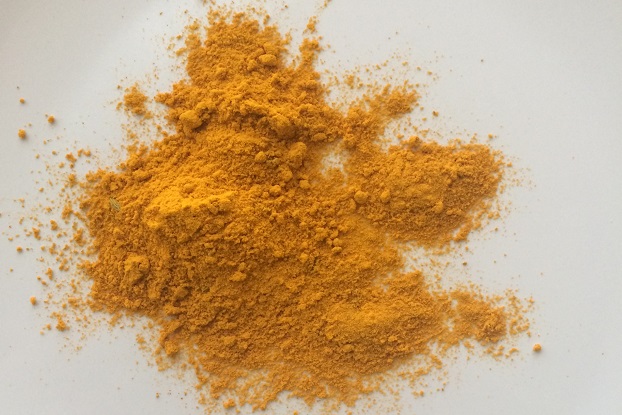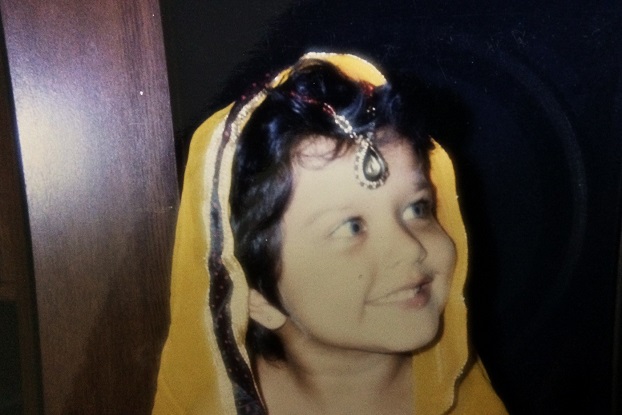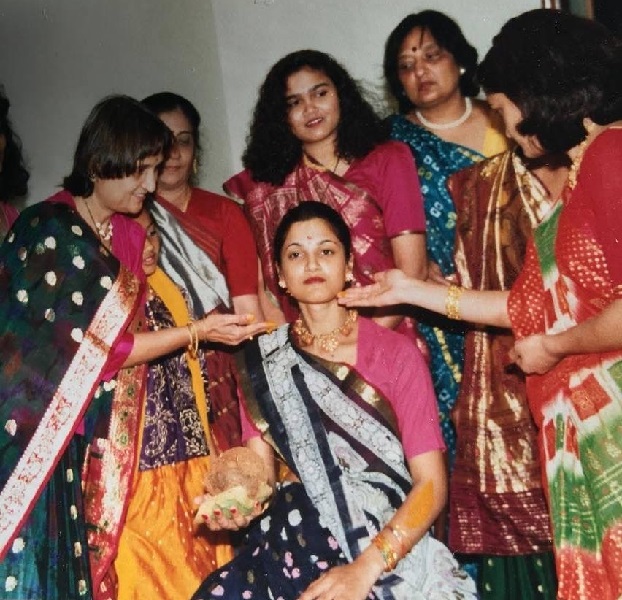
My first memories of turmeric aren’t found in the Indian foods that my mother would traditionally cook; but rather, a body wash that she and my grandmother would prepare to cleanse my skin. An ancient recipe that they mixed not by measurement but by heart: chickpea flour, a bit of heavy cream or rosewater, and a spoonful of turmeric powder to form a golden paste which they poured into a cup and took with me to my bath. I was taught to scrub it onto my face, arms, and legs — and to rinse it off after letting it sit for a minute.
But as a curious child, I could not help but dip my fingers into the golden mixture and eat it. It tasted surprisingly good and savory — for a few formative years, half would be used on my body and the other half consumed in secret. I’d later innocently confess this to my mother and grandmother, who both chided me for eating uncooked chickpea flour. It was probably the source of many post-bath stomach aches.

Later, my memories of the spice would center around a particular Hindu pre-wedding ritual known as a haldi ceremony, a playful tradition whereby a turmeric mask is applied to the bride and groom before their auspicious day. As a child, peering through a colorful ocean of sari-clad women, my height reaching just at their elbows, I would stare in awe at brides with their skin covered in the marigold-colored mixture.

Following these memories is one of my mother cutting herself with a kitchen knife by accident while cooking. Immediately, she formed a pile of turmeric on the counter and stuck her cut finger into it to stop the bleeding. Baffled at a use which I had immaturely deemed an old wive’s tale, I rolled my eyes and wondered in my teenage mind why she didn’t just use a band-aid, all while feeling relieved that my non-desi friends weren’t around to see this practice.
Later, in my twenties, using clear aligners with my teeth, I blamed turmeric for staining my aligners which I had forgotten to take out before eating an Indian meal. No matter how hard I scrubbed them, turmeric had left it’s saffron-colored mark. How dare this spice have such audacity so to ruin my appearance, I thought.
A few years ago, I began to take on Indian cooking with fervor. I started a blog, and I began teaching classes at a local organic grocery store. I officially began a love affair with Indian spices and started to form an understanding of each one on a personal level.
Turmeric, I found, was the backbone to many dishes — offering a hue and warmth in flavor so synonymous with Indian food. Meanwhile, during my classes, I found it amusing when a new student would ask me with apprehension if the dish I was about to create would be spicy. Others commonly asked questions such as, “Is all Indian food considered curry?” and I would gently and patiently tell them otherwise to correct misconceptions.
During one class, a student raised her hand and said, “Now, turmeric . . .it’s really good for you, isn’t it?” Many of the other students lit up after her question, (having probably read one of the multiple articles about turmeric found on the internet) nodding and anxiously awaiting my answer.
Turmeric is an all-star superspice!https://t.co/6yhC9MpV2l pic.twitter.com/zYwzIjO0qx
— Alternative Daily (@TheAltDaily) March 3, 2016
“Yes, it is really good for you,” I told her right before explaining health benefits of the spice. I told her how it is an anti-inflammatory, how it can help fight cancer, how it can help stiff joints, ward off Alzheimer’s disease, fight the flu, optimize cholesterol, and even battle depression. For good measure, I told the her it is best to take turmeric with a bit of black pepper to boost the absorption of curucumin, the active compound in the spice.
But I was never able to tell her my childhood stories of bathing while covertly snacking on turmeric paste; or how I hoped to one day sit on a lowered stool surrounded by family members in front of Hindu idols — in love and in ceremony covered in the spice as a soon-to-be-bride just like all of the beautiful brides I had witnessed throughout my life; how at one point I had paralleled my growing pains of identity with the innocuous use of the spice by my mother or how it was this spice that made me realize my love for Indian cooking.
But perhaps these tales are meant to be kept veiled. For as the rest of the world now discovers the multitude of health benefits of the spice and stocks it in their cupboards, Googling ways to use it, some of us are able to keep the spice not only in our kitchens, but deep in our hearts — in the form of turmeric tales.
* * *
Photographs provided by the writer. Nirali Patel teaches cooking classes in West Palm Beach, Florida and will take these classes to YouTube on a channel called NiraliCooks which launches in June 2016.












